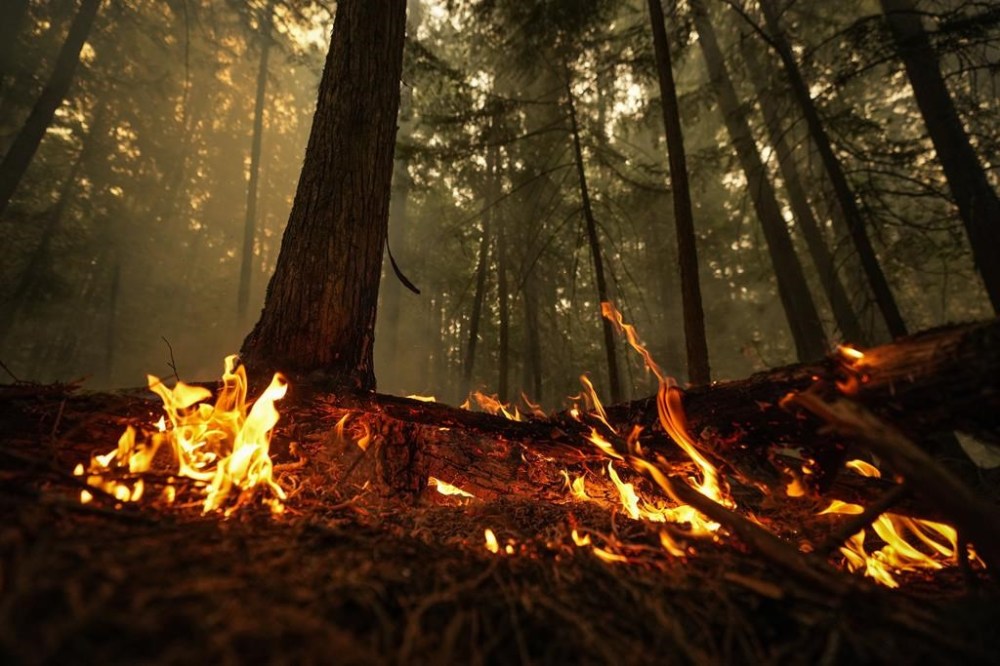Canada should be on ‘high alert’ for 2024 after record wildfire season: scientist
Advertisement
Read this article for free:
or
Already have an account? Log in here »
To continue reading, please subscribe:
Monthly Digital Subscription
$0 for the first 4 weeks*
- Enjoy unlimited reading on winnipegfreepress.com
- Read the E-Edition, our digital replica newspaper
- Access News Break, our award-winning app
- Play interactive puzzles
*No charge for 4 weeks then price increases to the regular rate of $19.00 plus GST every four weeks. Offer available to new and qualified returning subscribers only. Cancel any time.
Monthly Digital Subscription
$4.75/week*
- Enjoy unlimited reading on winnipegfreepress.com
- Read the E-Edition, our digital replica newspaper
- Access News Break, our award-winning app
- Play interactive puzzles
*Billed as $19 plus GST every four weeks. Cancel any time.
To continue reading, please subscribe:
Add Free Press access to your Brandon Sun subscription for only an additional
$1 for the first 4 weeks*
*Your next subscription payment will increase by $1.00 and you will be charged $16.99 plus GST for four weeks. After four weeks, your payment will increase to $23.99 plus GST every four weeks.
Read unlimited articles for free today:
or
Already have an account? Log in here »
Hey there, time traveller!
This article was published 12/01/2024 (674 days ago), so information in it may no longer be current.
Canada should be on “high alert” for 2024 wildfires, a scientist with the Canadian Forest Service said Friday, as he offered a sweeping view of last year’s record-shattering season.
Research scientist Piyush Jain stopped short of giving a prediction for the upcoming season during Friday’s briefing. But he presented a number of charts showing certain indicators, such as drought conditions and soil moisture, look similar to around this time last year.
He also pointed to temperature forecasts that predict a hotter than normal start to the wildfire season.

“I do not have a crystal ball,” he said. “But, yeah, I guess most people will be able to piece together that we should be on high alert for 2024.”
Jain spent Friday’s briefing going through a far-reaching and data-centric retrospective of the 2023 wildfire season. More people were evacuated and more area was burned last year than during any other Canadian wildfire season on record.
Widespread drought conditions, early snowmelt and lower than usual precipitation were some of the drivers of last year’s record-breaking season, he said.
Jain also pointed to research showing how climate change, fuelled by the release of greenhouse gases from the burning of fossil fuels, is also contributing to longer and more intense wildfire seasons.
He cited a study put together by a team of scientists, including some of his forest service colleagues, that zeroed in on northern Quebec’s wildfire season. That study found human-caused climate change made it seven times more likely to see a season with the same fire severity as 2023, and doubled the likelihood of extreme fire weather conditions.
The wildfires impacted “every single person living in Canada,” and was “seared into our collective consciousness,” he said.
Wildfire smoke choked the skies across Canada, closing schools and shutting down outdoor events. Canadians, per capita, experienced eight days of poor air quality, he said, but just how hazardous that air quality was and how many days it lasted varied drastically from place to place.
He said the Northwest Territories had a “staggering” 44 days with “very poor air quality,” while Toronto had 14 and Vancouver had four.
Parts of northern Alberta spent 135 days under air quality alerts, so many that a new colour had to be added to the colour-coded map tracking those alerts, he said.
Jain presented data showing Canadian wildfires in 2023 burned through more than 15 million hectares, an area larger than the entire state of New York and almost three times larger than Nova Scotia.
That total is about three million hectares less than what had been previously, and widely, reported. He said that’s in part because early estimates can include water bodies and unburned vegetation within the fire perimeter that scientists later identify in more fine-grained analysis.
Quebec led the way with nearly 4.5 million hectares burned, followed by the Northwest Territories, Alberta and British Columbia — a record for each province and territory.
About 240,000 people were evacuated due to wildfire. Five of the largest wildfire-induced evacuations since 1980 took place last year, including Yellowknife and West Kelowna.
But Jain said there were fewer total fires than the average year. Twenty of the largest fires in 2023 were responsible for half of the total area burned.
Historically, 75 per cent of fires were lightning-caused resulting in 91 per cent of the total area burned. But in 2023, 59 per cent of the fires were caused by lightning, resulting in 93 per cent of the total area burned.
This report by The Canadian Press was first published Jan. 12, 2024.

